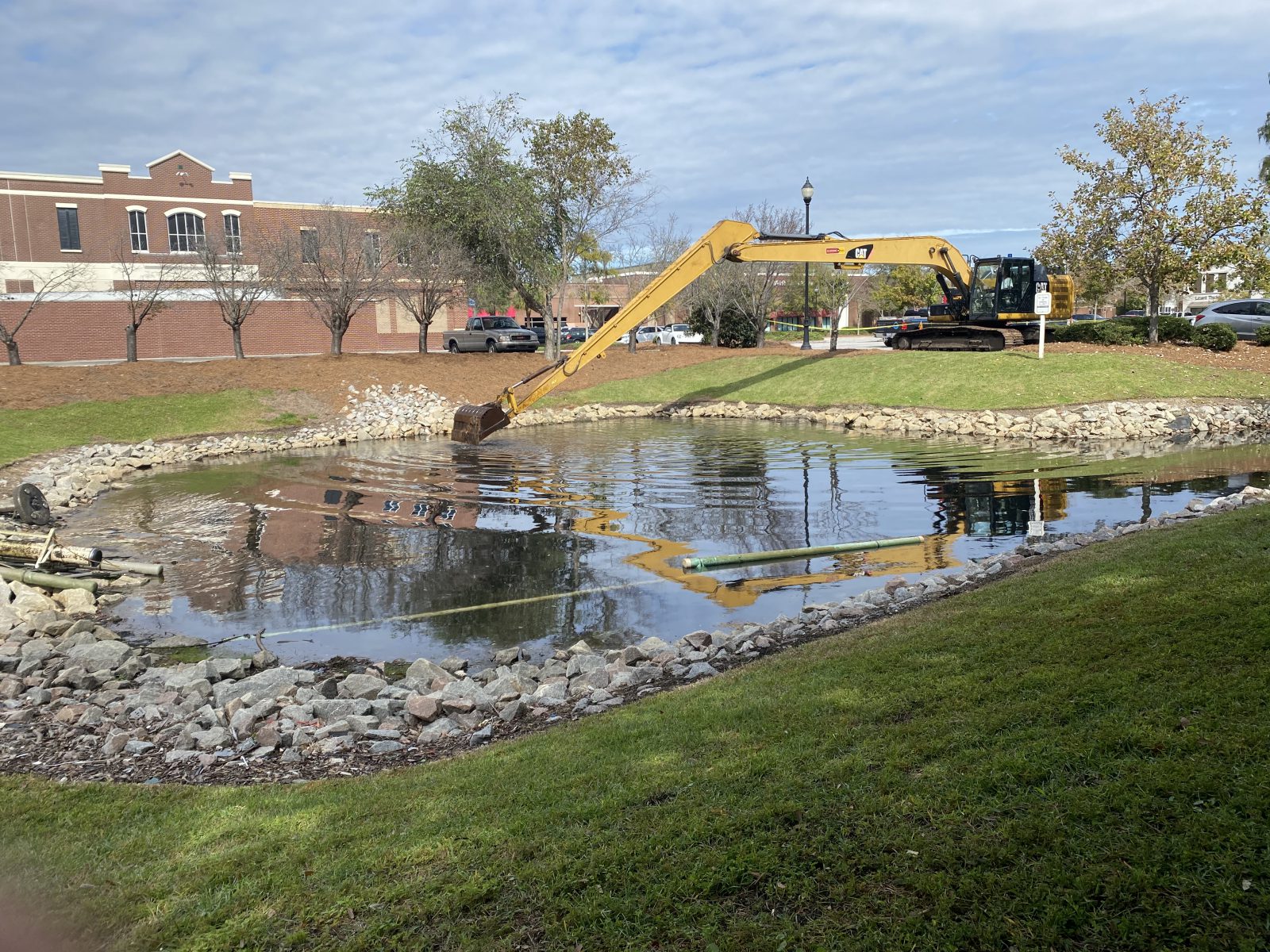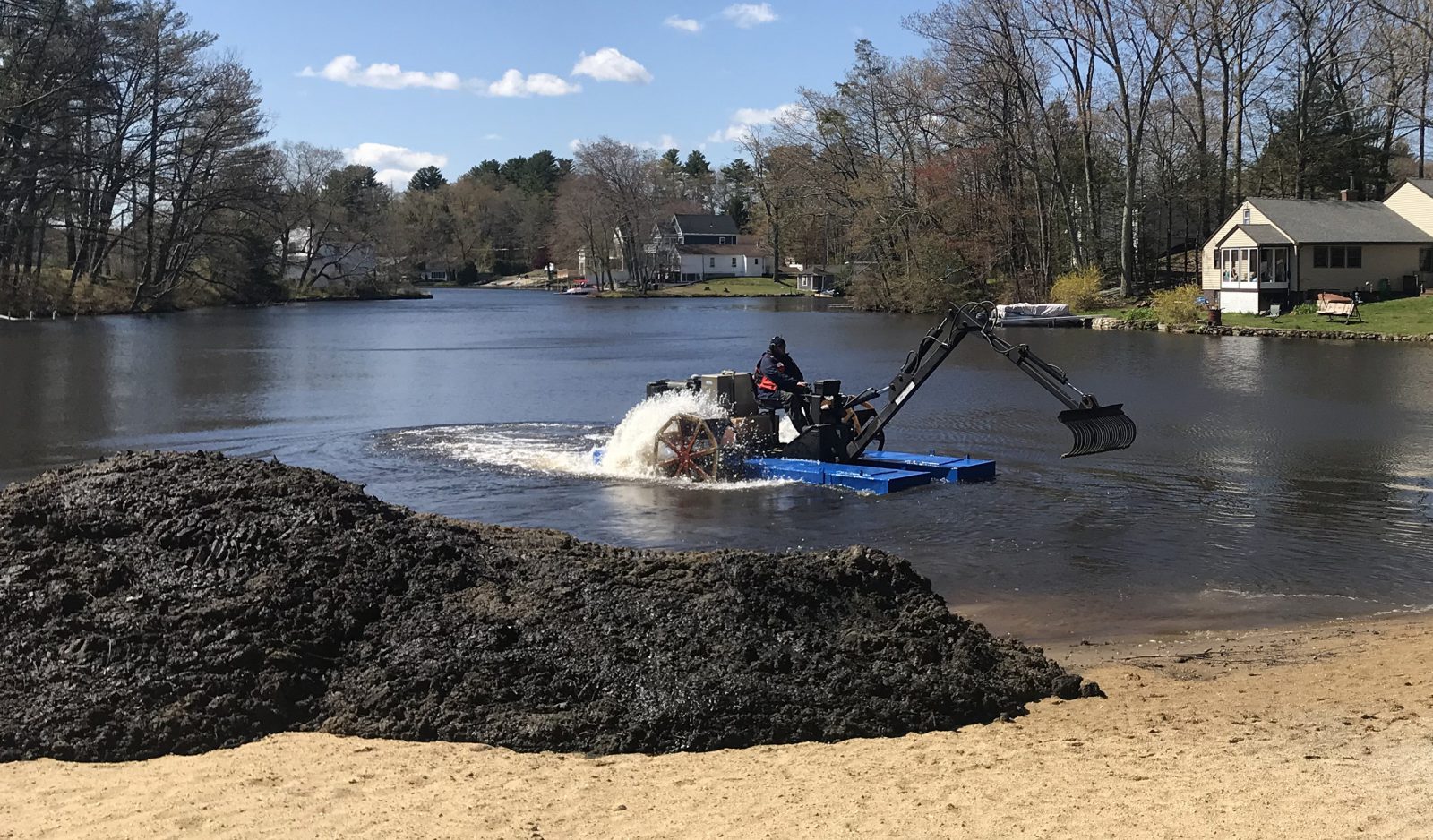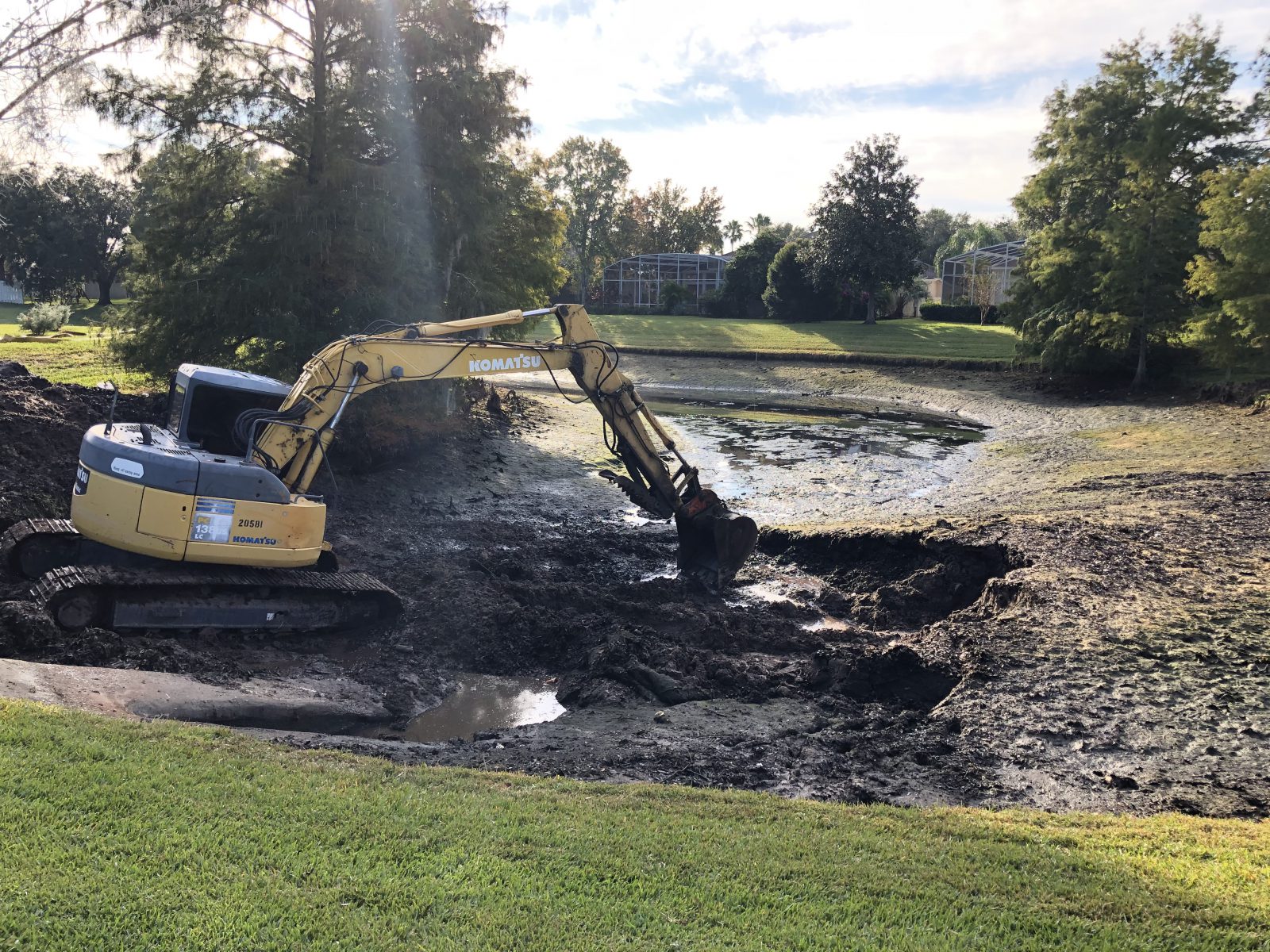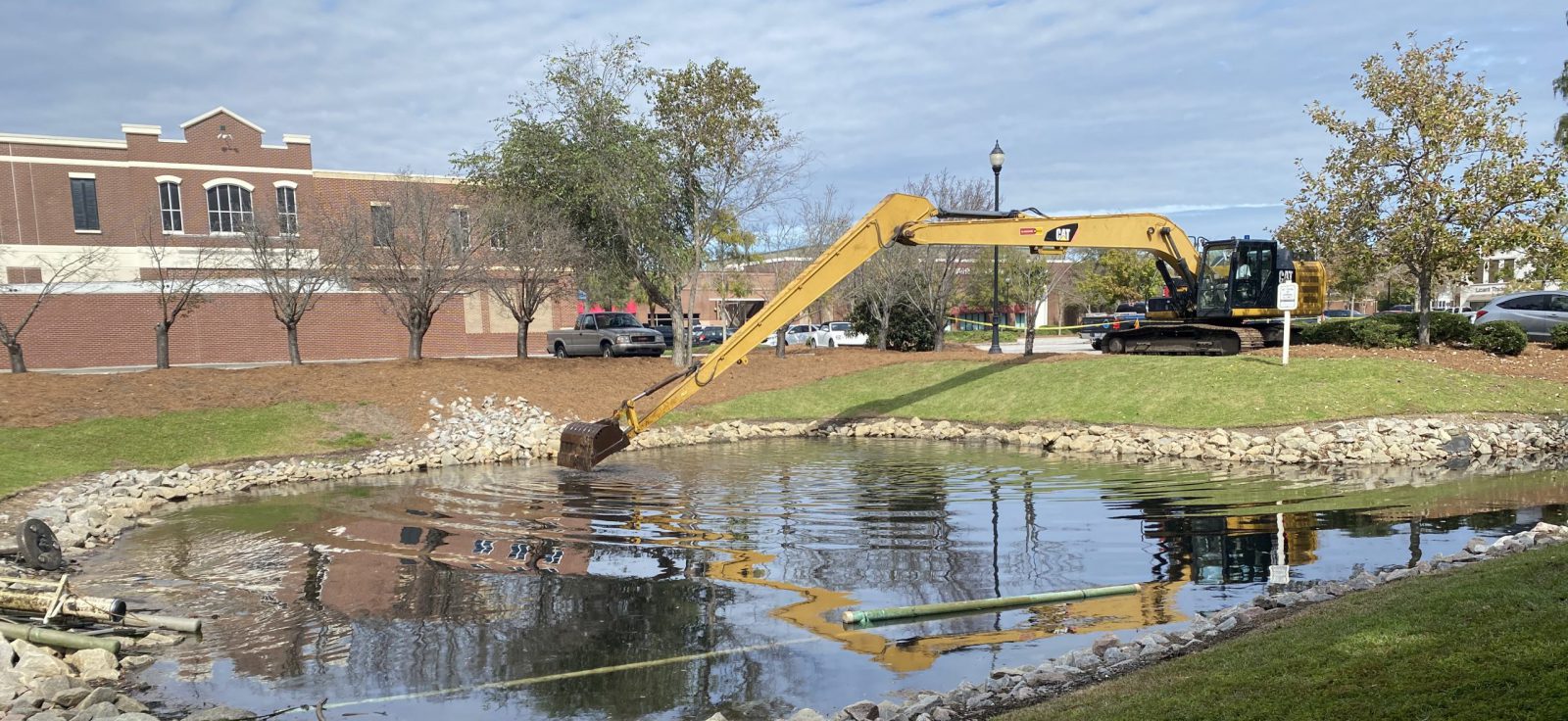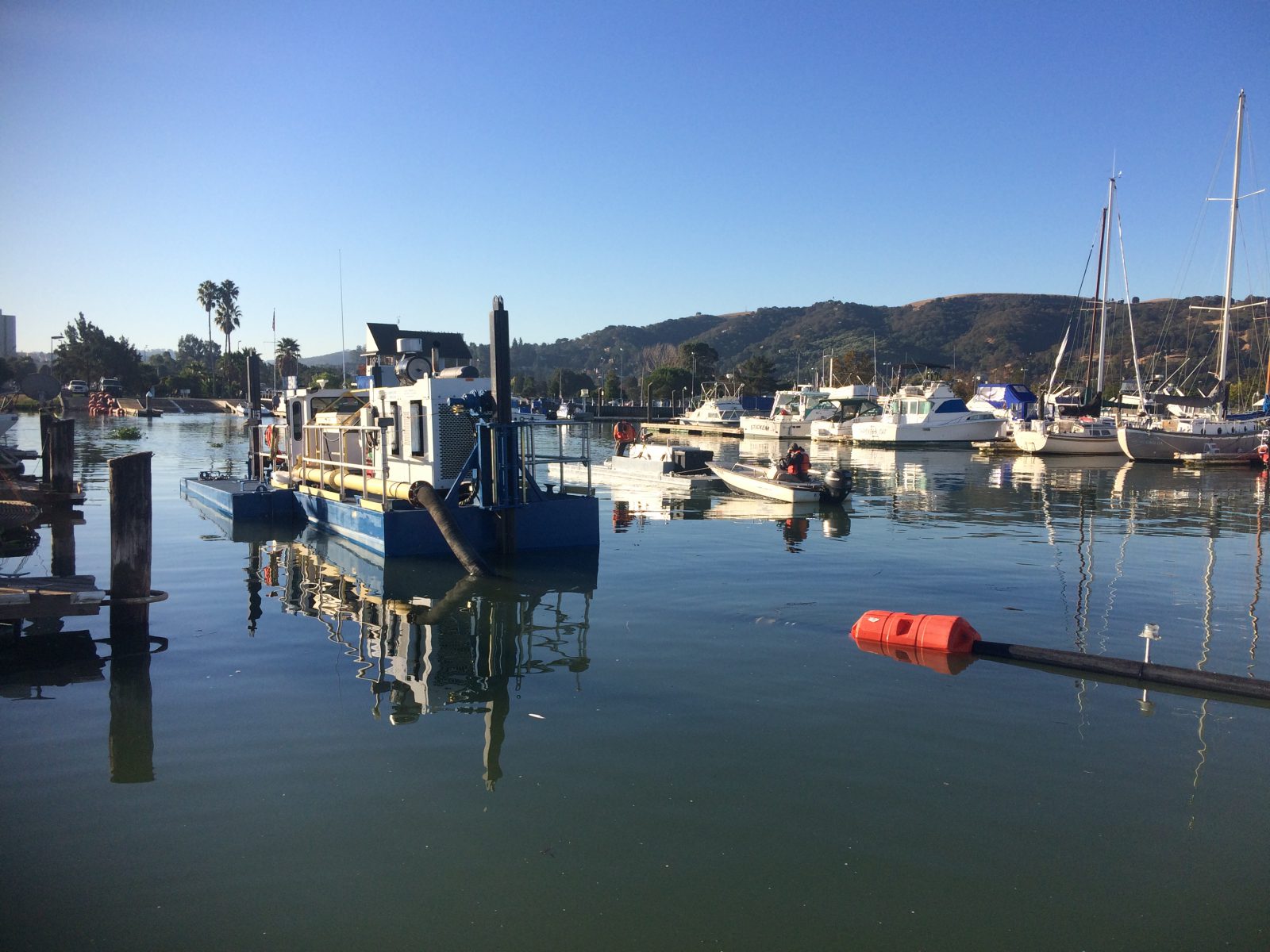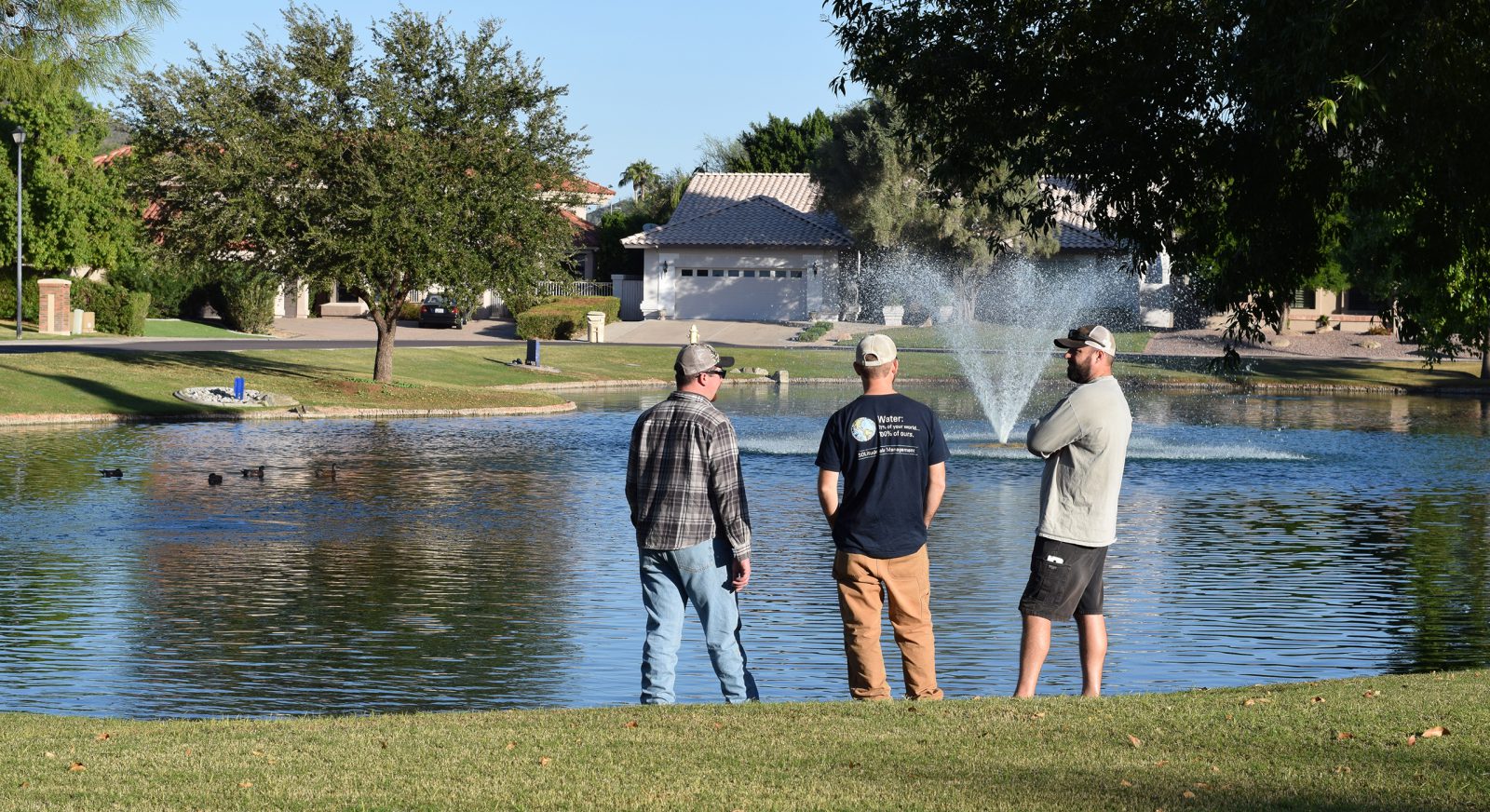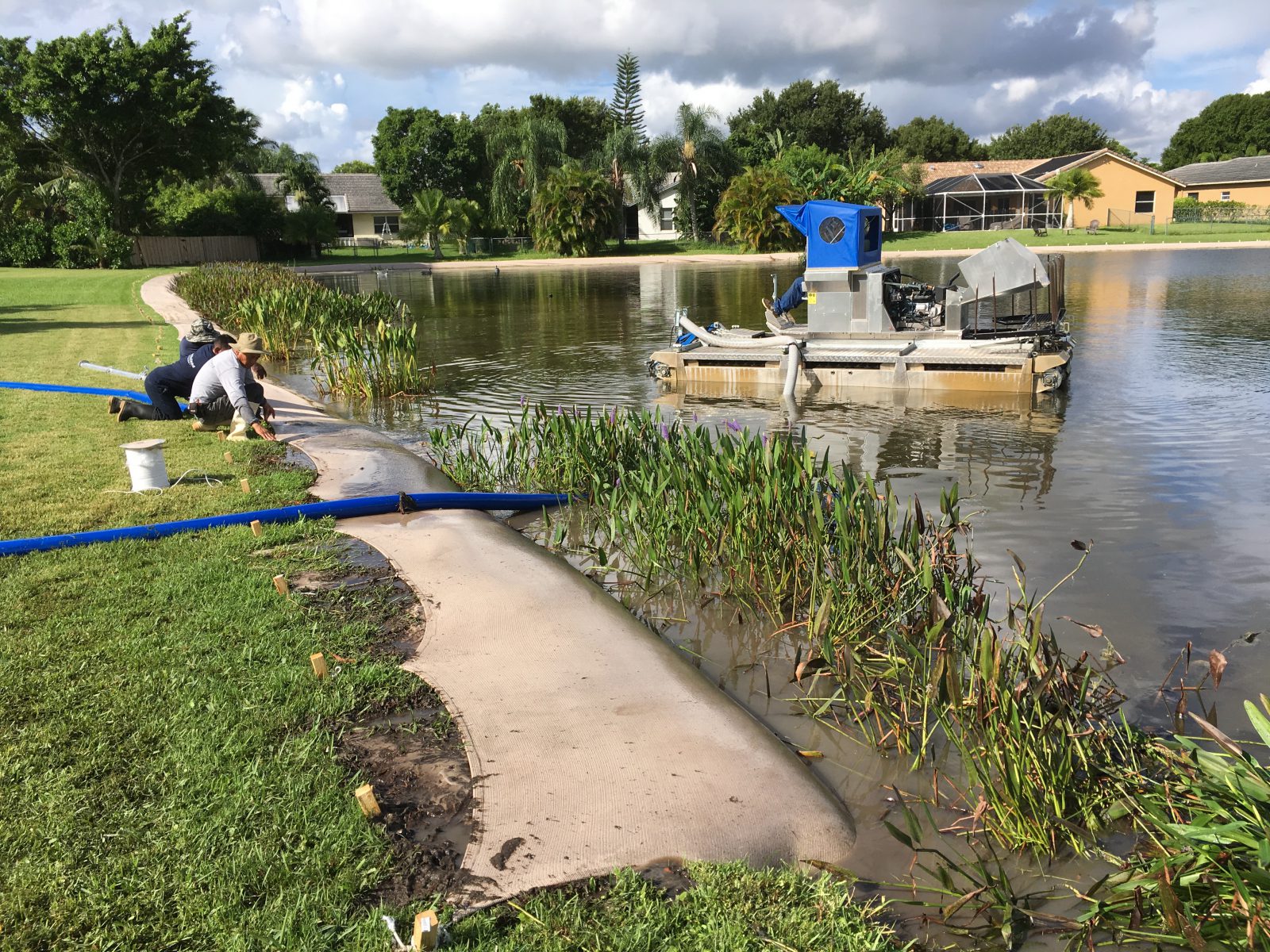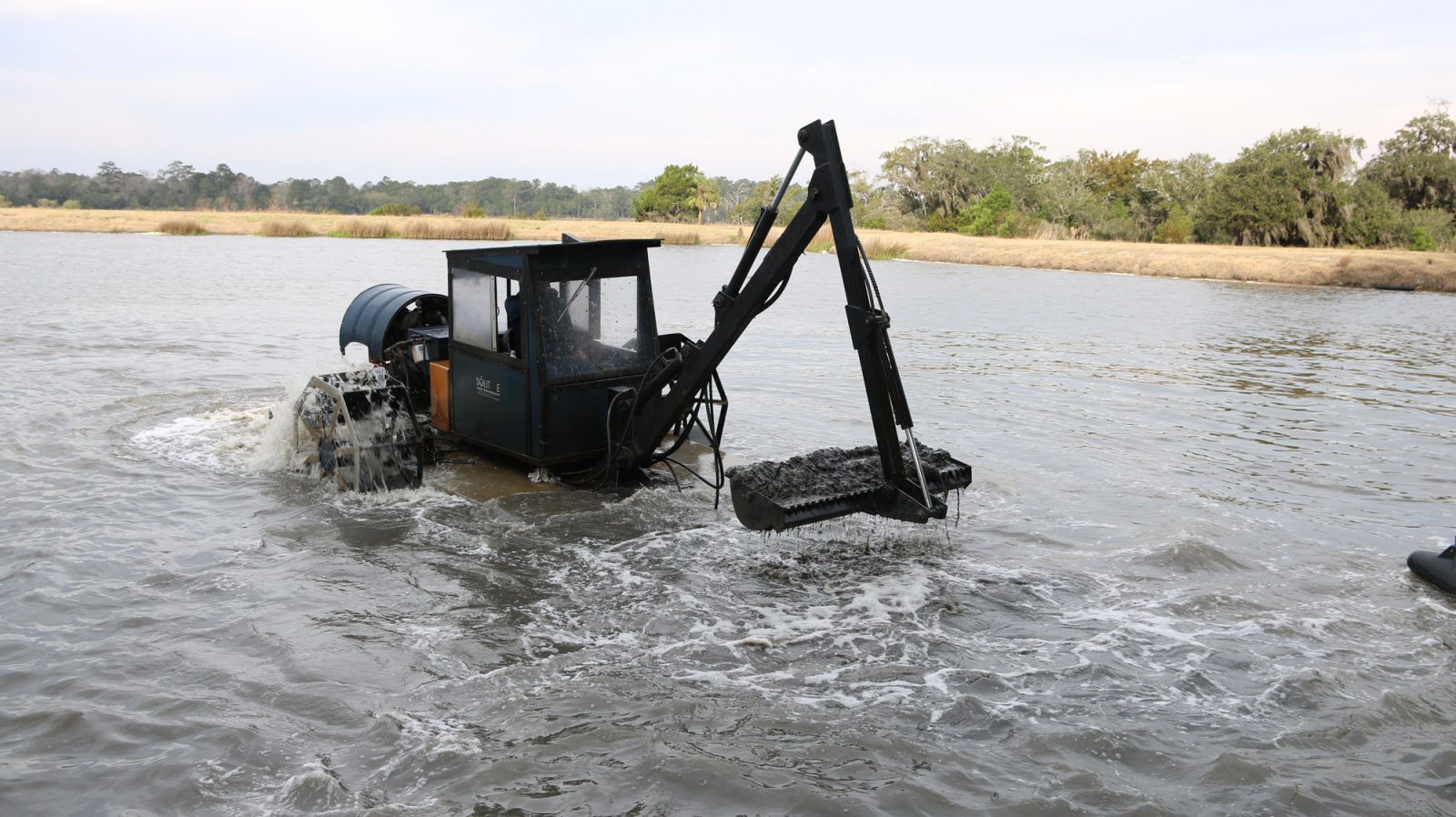
Your Comprehensive Guide to Mechanical Solutions
Our waterbodies are constantly changing and, in a sense, aging. Whether you oversee waterbodies in a community association, on a golf course, a municipality, or a private property, you’ve likely witnessed significant changes over the decades – and the many headaches that often come with them.
Signs your waterbody is nearing the end of its “lifespan”:
- Flooding occurs during rainstorms
- Waterfront property appears to be “shrinking”
- Shoreline erosion and steep, unsafe banks
- The emergence of sediment islands
- The growth of trees and shrubs in the water
- Bottom muck, cloudiness, and bad odors
- Chronic algae and weed issues
- Complaints from residents and visitors
- No record of dredging in the last 20-30 years
These indicators suggest that it might be time for a professional evaluation. Contact us to get started.
Water Restoration
There is rarely one specific remedy to restore a mature waterbody. Oftentimes, restoration includes a multi-year management program encompassing a combination of aquatic management tools and techniques.
Mechanical equipment may also be necessary to physically restore depth, circulation, and open water.
Mechanical hydro-raking and dredging are excellent tools to remove muck, sediment, and detritus that have accumulated over the decades – and improve the health of your waterbody for years to come.
Hydro-raking
The hydro-rake is essentially a floating barge outfitted with two hydraulic paddle wheels and a 12 ft. hydraulic arm that can lift hundreds of pounds of material in each scoop. Hydro-rakes physically remove the top layer of leaves, sticks, and detritus off the bottom of ponds or culverts, and can also be used to remove some species of aquatic vegetation.
Hydro-rakes sit about 18 in. deep in the water and can physically rake up to depths of about 10 ft. Due to a more compact size and a variety of rake options, it’s excellent at accessing small, tough-to-reach places like coves and inlets, or those with delicate shorelines.
However, hydro-raking isn’t always the right solution. There can be some inability to work around a high density of large materials like stumps and boulders. Likewise, hydro-raking is not recommended for waterbodies that contain submersed plant species that reproduce through fragmentation, as small plant remnants can clone themselves in the water column.
Dredging
Dredging is the process of removing large amounts of organic matter from the bottom of a lake or pond. This method is used to reset the waterbody to its original depth and volume, as well as reduce excess nutrients and pollutants in the ecosystem.
Stakeholders often cringe at the thought of a looming dredging project – it can be invasive, messy, and, most of all, expensive. Moreover, it can be extremely difficult to determine how much it will cost to dredge a pond without a professional evaluation and in-depth planning.
There are multiple dredging options available for various types of properties, environmental restrictions, budgets, and waterbody types – mechanical dredging and hydraulic dredging.
Mechanical Dredging
During mechanical dredging projects, long-reach excavators, semi-trucks, and trailers are brought into the project zone to drain all water from the lake or pond and scoop out hundreds of pounds of muck. This style of dredging is impactful and allows full visibility while working around underwater drains and equipment
However, mechanical dredging also has its drawbacks. By draining all water, native plants and wildlife are displaced. In some cases, building ramps or removing landscaping, sidewalks, and other community infrastructure may be necessary to gain access to the waterbody, or a crane must be brought in to hoist equipment over buildings, trees, and obstacles.
Hydraulic Dredging
During the hydraulic dredging process (also referred to as liquid dredging), water and materials are pumped through a specialized tube – much like a vacuum – to a holding tank where materials are contained and filtered. As water trickles out, it is returned to the lake or pond via tubing.
Unlike mechanical methods, hydraulic dredges can be positioned off-site, connected by hundreds or thousands of feet of tubing. This makes dredging less intrusive in populated areas and helps preserve aquatic plants and wildlife.
However, there are some reasons to avoid hydraulic dredging. The lack of visibility associated with hydraulic dredging makes navigating the bottom more difficult and increases the risk of damage to stormwater equipment.
Budget Considerations
Many stakeholders do not understand the various considerations that go into a price estimate and may underestimate how early they should begin budgeting for these projects.
Here are some of the top factors:
Planning: Before mobilization begins, professionals carefully work out project logistics, but there are many unknowns that simply cannot be accounted for. For example, unexpected rainfall can cause equipment to sink into bottom sludge and get stuck. Uncovering clay or plastic liners during the process can make restoration efforts more difficult. These and many other unpredictable events may require pivoting and additional funds.
Equipment: State-of-the-art dredging equipment is designed to endure difficult environmental conditions. Premium insurance and diligent maintenance throughout a project is necessary to ensure excavators and tubes stay in optimal condition. Dredging companies also utilize costly specialized spill kits that absorb any fuel leakage to prevent water contamination.
Overhead: Dredging projects are very labor-intensive and require highly-trained professionals. Typically, 4-6 experts are on-site for the entirety of the project, which can take 1-3 weeks or more to complete. Costly licenses and certifications must be maintained in order to operate the equipment.
Bathymetry: When planning a project, professionals start estimating lake dredging costs by determining how much material needs to be removed and what the material is made of. Experts rely on bathymetric mapping to create a three-dimensional model of the waterbody that reveals depth, bottom contours, and highly-accurate volume calculations. The average project removes around 4-6 ft of muck, and on some occasions 8-10 ft or more! Prices can increase dramatically in correlation with muck depth.
Dewatering: Material composition is important because it guides the type of equipment used for the job. When dredged materials are deemed too watery, they may require dewatering prior to removal from the site. Expensive geotextile dewatering bags and specialized dewatering tanks allow water to seep out. Professionals must return to the site on a regular basis to turn over the saturated piles, increasing overall costs.
Material testing and disposal: Complex regulations dictate where, when, and how materials can be disposed of. These regulations can vary by state. Prior to disposal, laboratory tests must be conducted to identify the presence of metals, contaminants, invasive species, or other environmental hazards. Depending on the results, landfills may impose additional fees to dump the material.
Safety and permitting: Dredging can cause significant environmental stress, so reputable companies often consult with environmental firms and the US Army Corps of Engineers to monitor and mitigate risks, including the downstream impact. Certain projects may require special permits, which can be particularly complicated and costly to obtain. Permits can also be revoked in the face of new weather conditions or project delays, further impacting the project budget.
Prevention
Whether you recently completed a restoration project or foresee one in your future, proactive maintenance is key to prevent problems from worsening or reoccurring. Professionals utilize many cost-effective tools, technologies, and services to monitor and support healthy, balanced waterbodies:
Bathymetric mapping: Professionals rely on bathymetric data during the planning stage of a dredging project, but bathymetric mapping is most beneficial when used as a proactive tool. When conducted every 1-3 years, experts can carefully monitor sediment accumulation and implement preventative solutions while the build-up is manageable. Most importantly, the data can be used to calculate when the next dredging project may need to take place and inform the budgeting process.
Biological augmentation: During this process, biological bacteria are applied to the water. These beneficial organisms feed on the nutrient-rich organic matter at the bottom, helping to eliminate muck and sludge naturally. Also referred to as biological dredging, this process can be used preventatively to maintain depth and healthy water quality conditions.
Shoreline repair: Lake and pond shorelines erode and become unstable without proper maintenance. The resulting sedimentation contributes to muck and build-up. Introducing beneficial buffer plants along the edge can help keep soil in place and slow runoff that degrades the shoreline during rainstorms. Waterbodies with significant shoreline damage may require complete restoration. Bioengineered shoreline technologies like SOX Erosion Solutions help reshape and anchor the eroded soil to the bank for improved stability and aesthetic value. In some cases, materials removed during hydro-raking or dredging projects can be used to rebuild the shoreline.
Weed and algae control: Maintaining the growth of algae and vegetation helps slow the cycle of growth and die-off that promotes bottom muck. Mechanical harvesters use a specialized cutting mechanism to physically remove plant biomass from the water. For more severe problems, highly-targeted herbicides or algaecides may be applied to inhibit aquatic weeds and algae development.
Nutrient remediation: Nutrients support the entire food chain, but in excess levels, they can fuel nuisance growth and poor water quality conditions. Nutrient remediation products safely interrupt the natural process of nutrient uptake to support more balanced water quality conditions.
Fountains and aeration: Even under the water, oxygen is essential for a healthy ecosystem. In addition to supporting beneficial organisms and wildlife, oxygen helps maintain appropriately balanced nutrient levels. Floating fountains and submersed aerators can be installed to increase dissolved oxygen and better disperse it throughout the waterbody for maximum impact.
Water quality monitoring: Like bathymetry, water quality testing reveals a wealth of information about what’s going on below the surface. Countless physical, chemical, and biological properties come together to form the waterbody on your property. Professional laboratory scientists use data to detect potential imbalances in the water column and measure the progress of management efforts.
No matter the current state of your waterbody, it’s important to consult with a reputable company that empowers you with the knowledge to make informed decisions throughout the process, from budgeting to execution to post-project maintenance.
Watch the Hydro-rake In Action
SOLitude Lake Management is a nationwide environmental firm committed to providing sustainable solutions that improve water quality, enhance beauty and preserve natural resources.
SOLitude’s team of aquatic scientists specializes in the development and execution of customized lake, stormwater pond, wetland and fisheries management programs. Services include water quality testing and restoration, algae and aquatic weed control, installation and maintenance of fountains and aeration systems, shoreline erosion control, muck and sediment removal and invasive species management. SOLitude partners with homeowners associations, golf courses, private landowners, businesses and municipalities. SOLitude Lake Management is part of Rentokil, a leading business services company, operating across the United States, Canada and Puerto Rico.
For more information, visit SOLitude Lake Management at solitudelakemanagement.com, and connect on Facebook, LinkedIn and Twitter.








